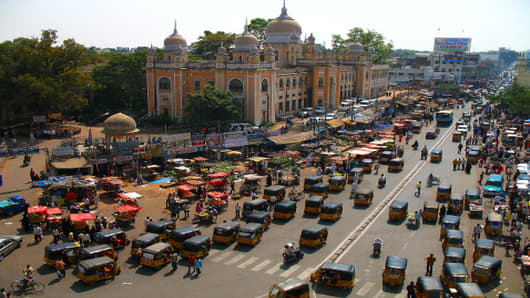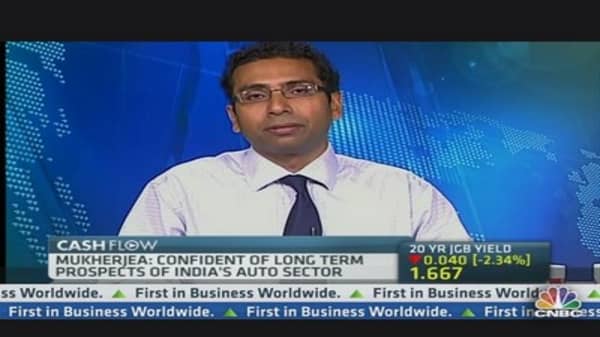The slump in the Indian rupee, which is hovering near lifetime lows, poses a threat to the recovery in Asia's third largest economy that is already on fragile footing, economists say.
"I think rupee weakness is going to be a big issue - given how central the rupee is in determining the current account deficit, inflation and macroeconomic stability," said Vishnu Varathan, senior economist at Mizuho Corporate Bank. "It could impede India's recovery."
The rupee has been among the worst hit in the recent emerging market currency rout, declining around 8 percent against the U.S. dollar since early May, and currently trading near the 59 handle. Currencies such as the Indonesian rupiah and Thai baht, by contrast, have declined just 2 percent and 5 percent respectively, over this period.
Investors fear that a scaling back of the U.S. Federal Reserve's monetary stimulus, which has supported investment inflows into India in the recent years, could hurt the country's ability to fund its large current account deficit especially if an exit of cash leads to a sharp depreciation in the rupee's value.
Economists at Nomura agree that rupee weakness would significantly worsen economic fundamentals. They estimate that every 10 percent depreciation in the rupee against the dollar would increase the country's current account deficit by 0.4 percent of gross domestic product (GDP) and add 0.6-0.8 percent to wholesale price inflation.
(Read More: Why Emerging Markets Are Still on Shaky Ground)
India has witnessed a prolonged period of sluggish economic activity driven by a downturn in investment and weakening consumption. The economy grew just 4.8 percent in the January- to-March period, a far cry from the 8-9 percent growth rates seen in the run-up to the global financial crisis.
"With exports more demand-sensitive - and not price sensitive - and India's import demand largely inelastic due to domestic supply side constraints, a weak currency tends to worsen the current account balance," Nomura's economists wrote in a report.
India's current account deficit, which touched an all-time high of 6.7 percent of GDP in the October to December quarter, is a significant concern for the country's policymakers.
"The rate-cutting cycle would likely be slightly delayed as the Reserve Bank of India attempts to balance the dilemma between managing the currency and supporting growth. All in all, this would probably delay a growth recovery in India," they added.
Worries about upside risks to inflation as a result of rupee depreciation prompted the Reserve Bank of India to hold interest rates steady at 7.25 percent at its policy meeting this week.
(Read More: India Leaves Rates Unchanged)
On the positive side, however, the bank added that currency weakness could prompt the government to speed up reforms to attract greater capital inflows by raising the foreign direct investment limit in areas such as defense, telecom, asset reconstruction companies and commodity exchanges.
Grim Outlook
According to Credit Agricole, the rupee "will remain at the mercy of global sentiment" in the coming weeks, and is likely to stay weak for an extended period.





